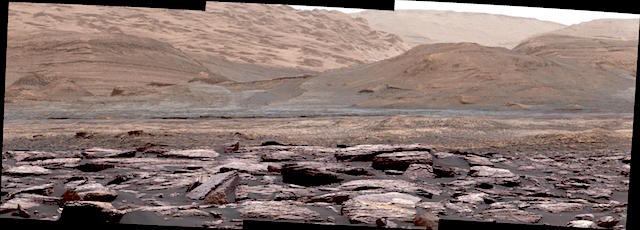Editor’s note: Press conference video here.
NASA’s Curiosity rover is climbing a layered Martian mountain and finding evidence of how ancient lakes and wet underground environments changed, billions of years ago, creating more diverse chemical environments that affected their favorability for microbial life.
Hematite, clay minerals and boron are among the ingredients found to be more abundant in layers farther uphill, compared with lower, older layers examined earlier in the mission. Scientists are discussing what these and other variations tell about conditions under which sediments were initially deposited, and about how groundwater moving later through the accumulated layers altered and transported ingredients.
Effects of this groundwater movement are most evident in mineral veins. The veins formed where cracks in the layers were filled with chemicals that had been dissolved in groundwater. The water with its dissolved contents also interacted with the rock matrix surrounding the veins, altering the chemistry both in the rock and in the water.
“There is so much variability in the composition at different elevations, we’ve hit a jackpot,” said John Grotzinger, of Caltech in Pasadena, California. He and other members of Curiosity’s science team presented an update about the mission Tuesday, Dec. 13, in San Francisco during the fall meeting of the American Geophysical Union.
As the rover examines higher, younger layers, researchers are impressed by the complexity of the lake environments when clay-bearing sediments were being deposited, and also the complexity of the groundwater interactions after the sediments were buried. [More at link]









